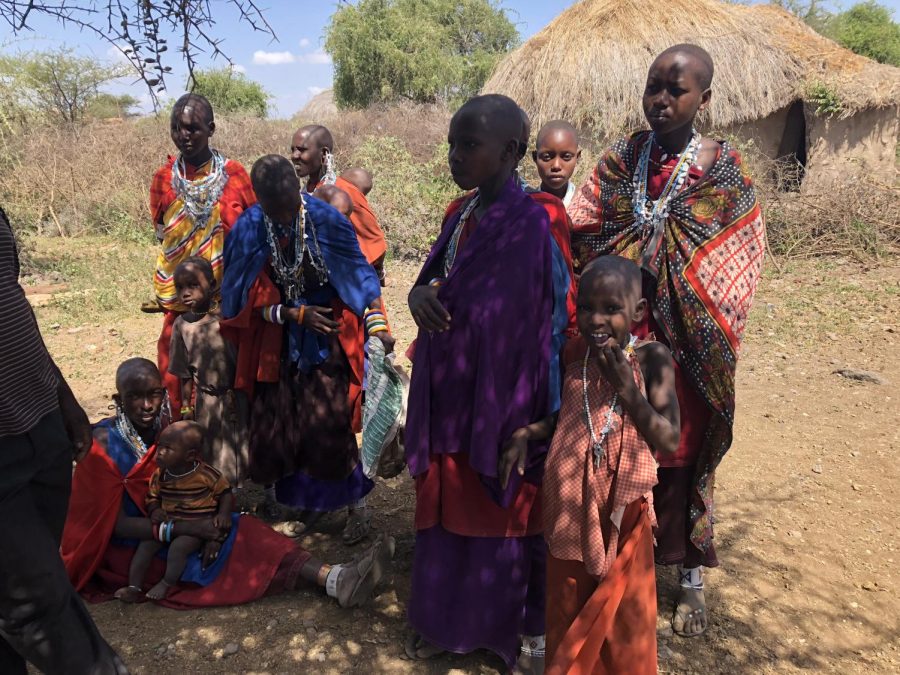An African Adventure: The 2019 Annual Tanzania Conservation Expedition
March 3, 2019
Waking up in the midst of an African savanna to the sounds of elephants crashing through the woodland and the quiet stir of crickets, being immersed into the modest yet enviable lives of the indigenous Maasai tribes, and driving through a safari during a blushing African dawn- these are the experiences the Village School’s Tanzania Expedition has given to the students who attended the trip this year.
The Tanzania Conservation Expedition, a trip hosted by Nord Anglia Education, is a program aimed at immersing students into a multitude of conservation efforts in the Arusha district of Tanzania. Not only does the program allow students to join an active force of volunteers to help rebuild the indigenous area, but also provides students an experience for them to grow as individuals and expand their holistic perspective.
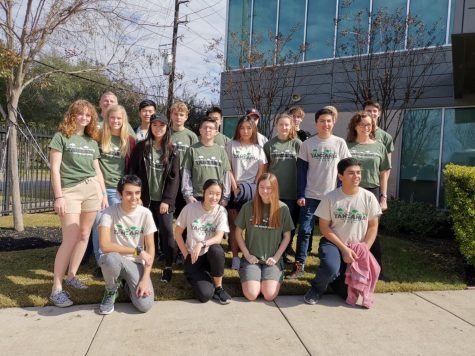
This year nearly twenty students, freshman through juniors, elected to participate in the Tanzania trip, which took place from Jan. 26th to Feb. 5th. Traveling alongside the British International School of Houston, who also participated in the program, students of both schools spent two of the eight days specializing in a conservation effort to rebuild the botanic gardens of the Arusha National History Museum, which had fallen into a dilapidated state following a stall in funding.
“Volunteering at the botanic garden was, for me, the most enjoyable part of the trip,” sophomore Madeleine Davis said. “Out of all the main activities, it was definitely the most refreshing and really allowed you to contribute to the community.”
With donations made by Village and other Nord Anglia students, the Museum was able to resume their conservation efforts, fully dedicating an adjunct plot of land of the Museum’s property to nursing native Tanzanian plants. There, students collaborated with employees of the Museum to clear overgrown areas of invasive vegetation, construct a traditional African-style keyhole garden, and paint murals on the Museum’s garden walls.
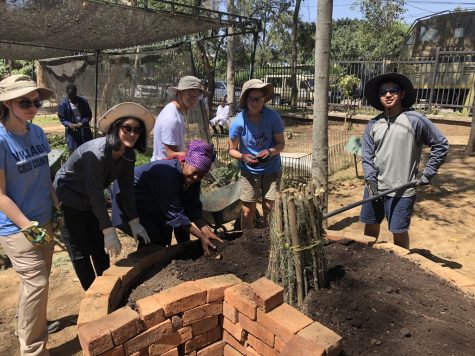
“Volunteering at the garden was very rewarding since it was a service project that would be worthwhile since it helped preserve endangered indigenous African species of plants,” sophomore Joshua Varghese said. “Our group was the first to work on the garden and since we already transformed the garden so much, I am excited to see the full transformation of the entire botanical garden after all of the groups went in and did their service through the pictures that the owner of the botanical garden will send us.”
Botanical gardens are meant to educate museum-goers and preserve the knowledge and study of different plant life of the area. Not only are they essential pieces of plant conservation, but also help maintain the environment through sustainable development. The Arusha National History Museum botanical garden also places a special emphasis on composting and reliance on all-natural methods of fertilization.
“Volunteering at the garden was exhausting but fun,” said Yazan Binnasser said. “We worked for many hours on two days, but it was worth it seeing how we transformed the garden completely, and how our effort had an impact.”
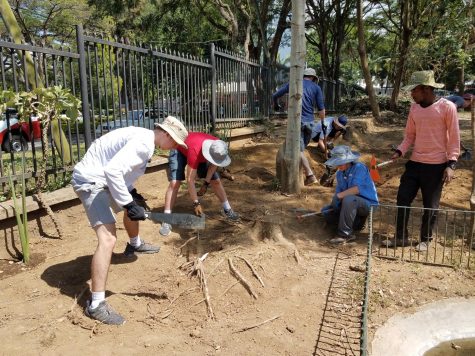
Leaving the garden after two days of continual and grueling work, Village students got to say goodbye knowing that the contribution they had made would come to educate and be appreciated by hundreds of visitors.
Continuing on the volunteering, students also spent a day working with the aboriginal Maasai tribes by installing lights on several bomas (living quarters and livestock enclosures of the Maasai) designed to prevent livestock from being killed by wild animals, such as cheetahs and hyenas.
“Learning about the lights put in bomas that ward off predators such as cheetahs, lions, hyenas, leopards, et cetera, in order to protect the people living in the bomas and their livestock was absolutely fascinating,” Varghese said.
The Maasai people had struggled for generations with the constant threat of wildlife killing of their livestock, which included cows and goats that are crucial for the survival and feeding the boma populations. Often times, wild animals would invade the bomas and slaughter forty goats at once only to take one to eat, thus forcing Maasai men to sleep near the livestock enclosures to monitor the livestock’s safety and scare off possible predators.
“Interacting with the Maasai people was very exciting since I got to observe truly indigenous and traditional African culture,” Varghese said. “It was also very humbling to see what simple lives they live in remote bomas throughout Tanzania.”
Through the efforts, both labor and financial, provided by Village students the many Maasai families are now able to fend off large cats and other carnivores through the technology of LED lights which intimidate and frighten predators.
“It is nice knowing that the work we did there helped improve many people’s lives forever as well as allow the people to coexist with the animals that would have been otherwise a threat,” said Binnasser.
While a large focus of the trip was to service the Tanzanian environment, students were also exposed to different experiences that allowed them to grow as citizens and as people through unique opportunities such as a safari and camping.
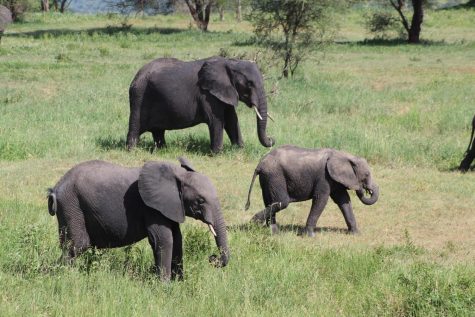
One of the highlights for many was the safari through Tarangire National Park. Tanzania, home of Mount Kilimanjaro and the Serengeti National Park, supports an abundant population of wild animals and the largest wildebeest migration in all of Africa and is the leader in animal concentration per square kilometer in the world. As the nation with the most land dedicated to national parks, students were able to witness a wide variety of animals including African elephants, lions, buffalo, zebra, giraffes, wildebeest, dik-dik, jackals, monkeys, and many more.
“My favorite part of the trip was the safari where we got to see hundreds of African animals living in the wild all day,” Varghese said. “My favorite part of the excursion was between seeing a huge elephant herd of 50 or so elephants all together with both baby elephants and adult elephants and seeing a family of lions with two female lions and three cubs who seemed totally unbothered by the huge safari vehicle we were traveling in.”
A large part of the two-day safari excursion, however, was spending a night camping within the Tarangire National Park, where the darkness revealed a sky filled to the brim with stars and an astronomy lesson allowed students to learn about the outer space unhindered by even the slightest trace of pollution.
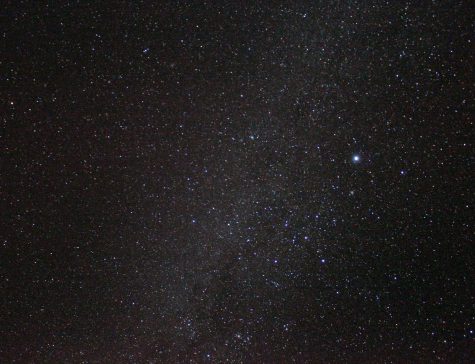
“I think this will be a lasting memory because it was an experience that not only you don’t experience every day, but here [in Houston], it’s not possible to go through such an experience. I also enjoyed the night because we got to light a campfire and have a nice talk with our friends.”
While the trip only lasted eight days, the students that attended the trip all agree that not only will they never forget it, but they will often think back to the experience.
“I have learned to not take all of the things I have for granted and to be satisfied with my life because some of the people that we observed in Tanzania have to go through extreme and unimaginable hardships on a daily basis,” Varghese said.


